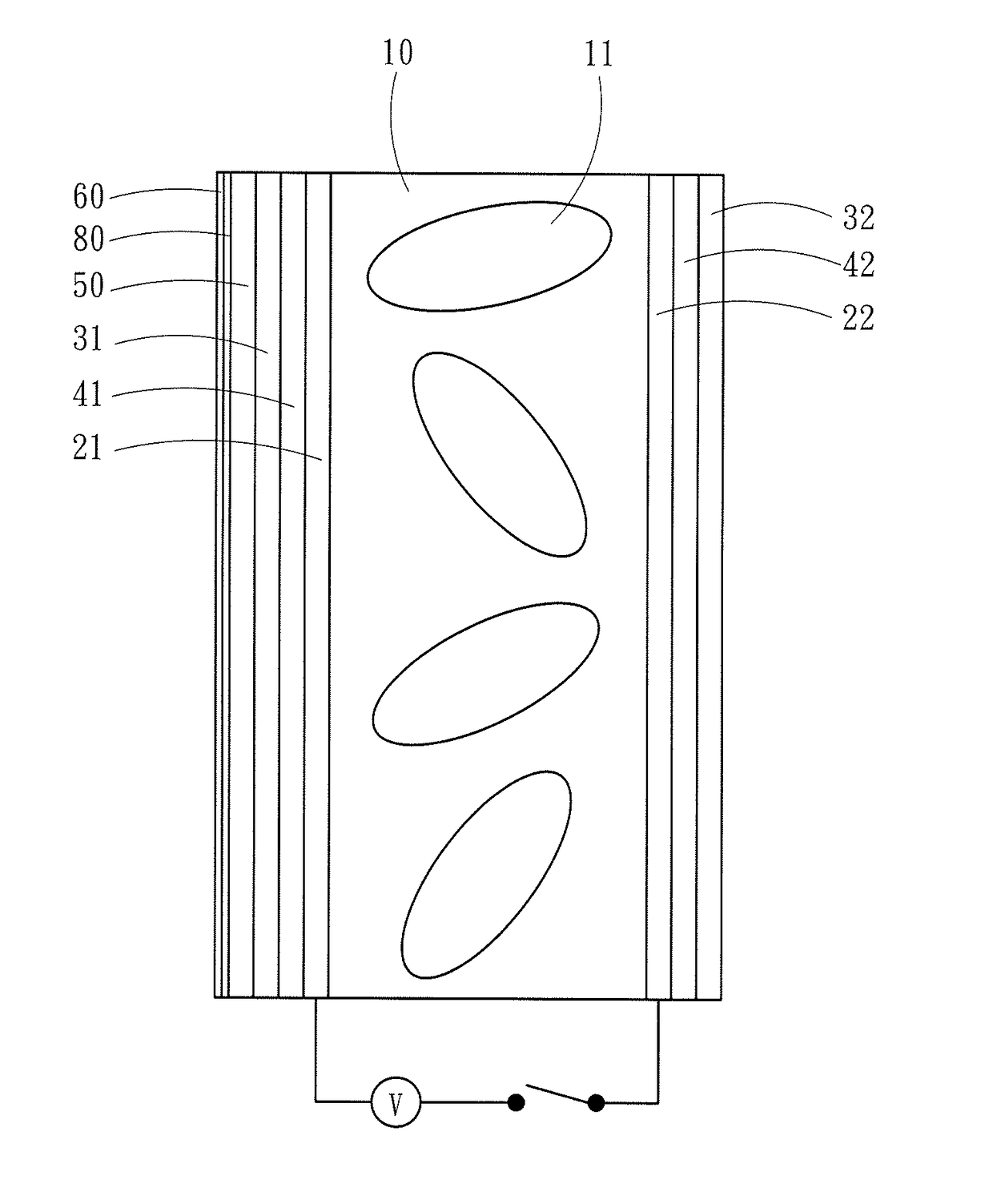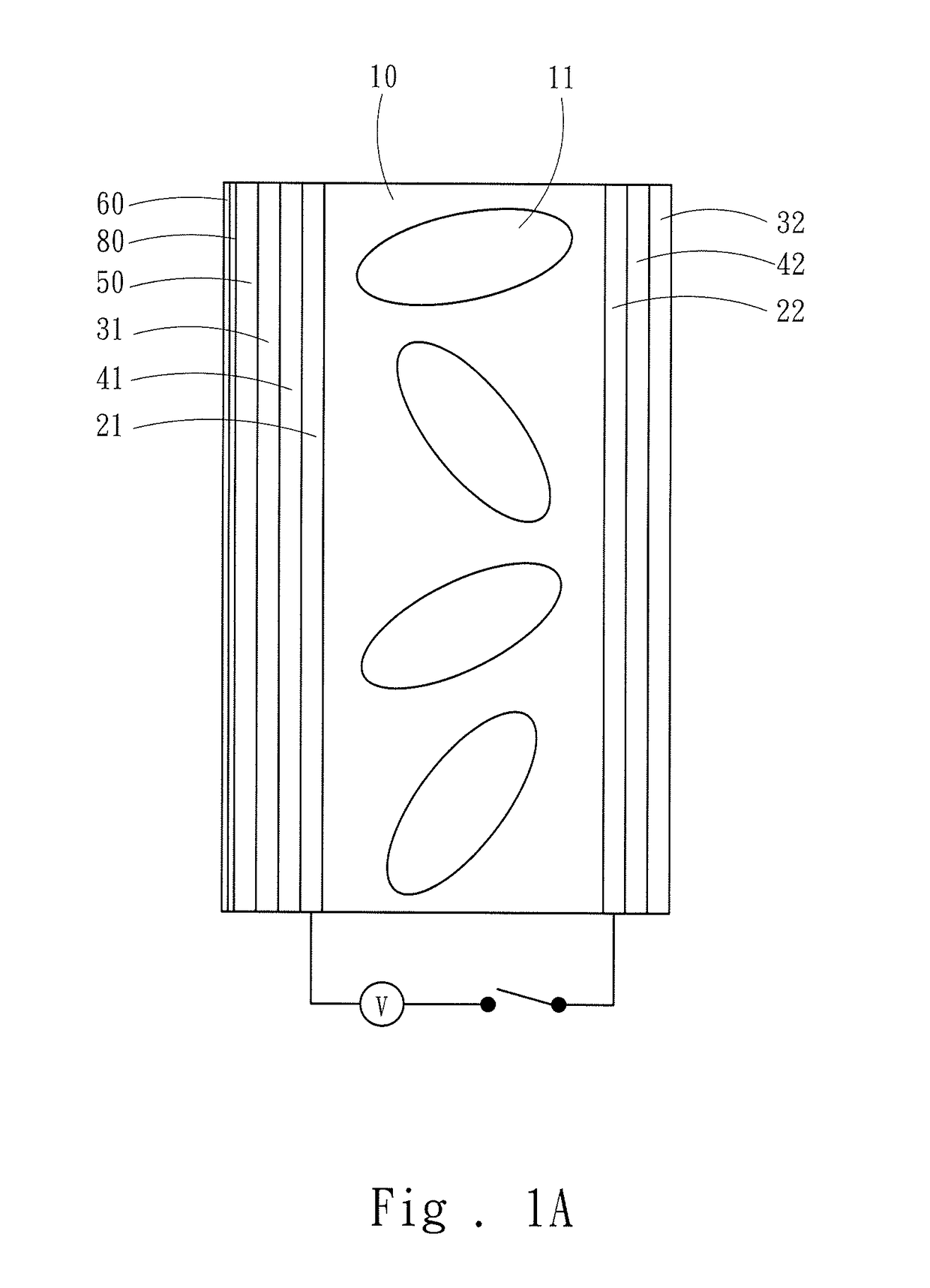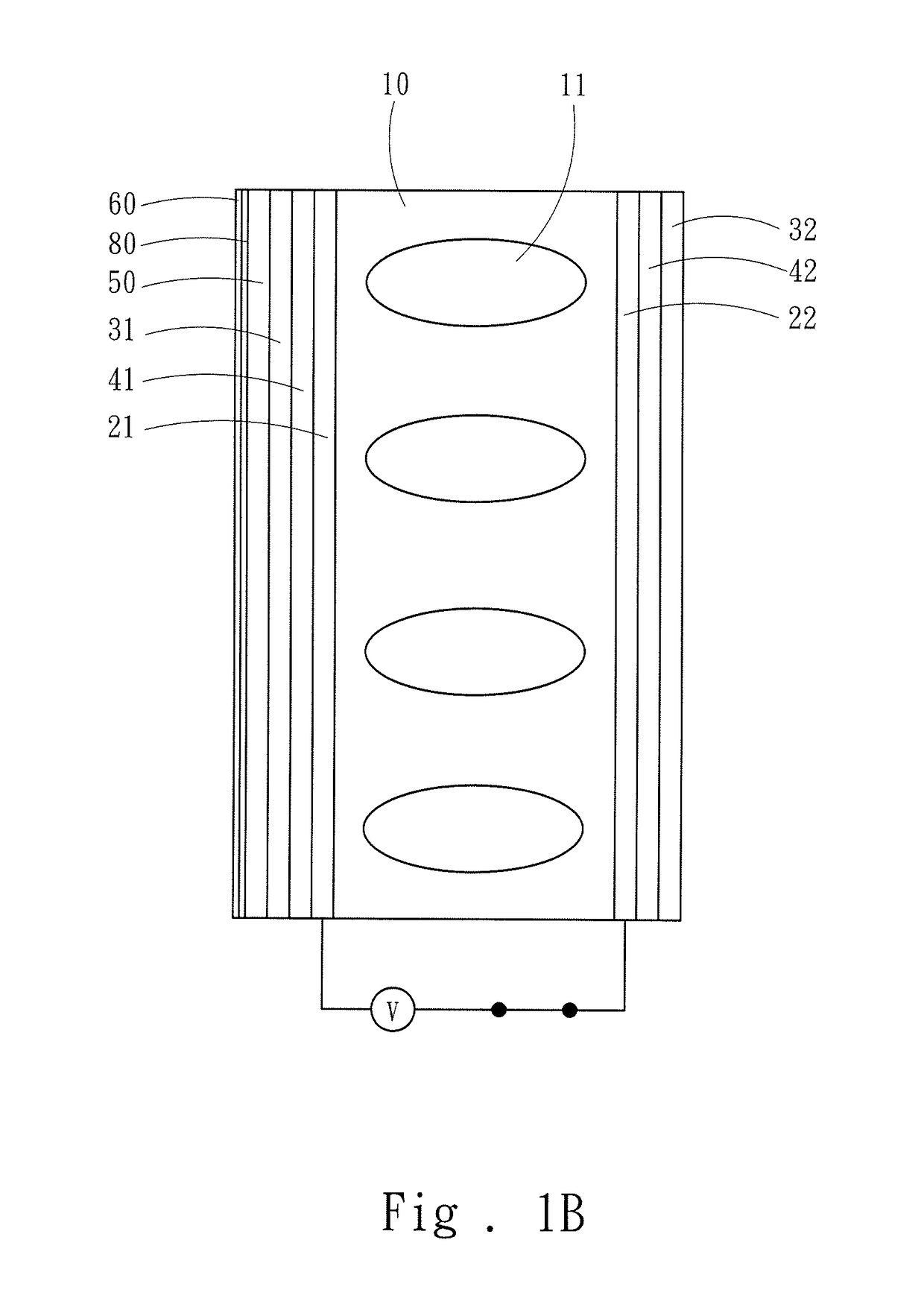Polymer-dispersed liquid crystal light-regulation structure
- Summary
- Abstract
- Description
- Claims
- Application Information
AI Technical Summary
Benefits of technology
Problems solved by technology
Method used
Image
Examples
Embodiment Construction
[0014]The technical contents of the present invention will be described in detail in cooperation with drawings below.
[0015]Refer to FIG. 1A and FIG. 1B for a first embodiment of the present invention. The present invention proposes a polymer-dispersed liquid crystal (PDLC) light-regulation structure, which comprises a liquid crystal light-regulation layer 10, a first anti-infrared light-permeable conductive layer 21, a second anti-infrared light-permeable conductive layer 22, a first light-permeable substrate 31, and a second light-permeable substrate 32. The liquid crystal light-regulation layer 10 includes a plurality of liquid crystals 11. The first anti-infrared light-permeable conductive layer 21 and the second anti-infrared light-permeable conductive layer 22 are respectively disposed on two sides of the liquid crystal light-regulation layer 10. The first light-permeable substrate 31 and the second light-permeable substrate 32 are respectively disposed on one side of the first...
PUM
| Property | Measurement | Unit |
|---|---|---|
| thickness | aaaaa | aaaaa |
| light-regulation structure | aaaaa | aaaaa |
| anti-infrared light-permeable conductive | aaaaa | aaaaa |
Abstract
Description
Claims
Application Information
 Login to View More
Login to View More - R&D
- Intellectual Property
- Life Sciences
- Materials
- Tech Scout
- Unparalleled Data Quality
- Higher Quality Content
- 60% Fewer Hallucinations
Browse by: Latest US Patents, China's latest patents, Technical Efficacy Thesaurus, Application Domain, Technology Topic, Popular Technical Reports.
© 2025 PatSnap. All rights reserved.Legal|Privacy policy|Modern Slavery Act Transparency Statement|Sitemap|About US| Contact US: help@patsnap.com



